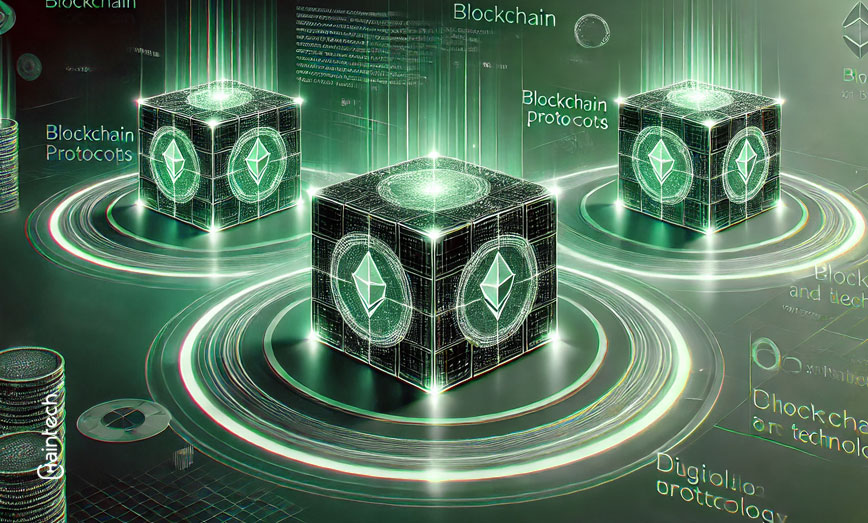Revolutionizing the Indian Education Sector: Exploring the Potential of Blockchain Technology

Overview of the current educational landscape in India
The Indian education sector is a vast system that encompasses numerous schools, colleges, universities, and institutions. With a population of over 1.3 billion people, the education sector plays a crucial role in shaping the future of the nation. However, traditional methods of managing educational data and processes have often proven to be cumbersome and prone to errors.
Challenges faced by the Indian education system
Despite its magnitude, the Indian education system faces several challenges that hinder its smooth functioning. These challenges include issues related to certification fraud, data security, transparency in financial transactions, and content copyright violations. Traditional methods of handling these challenges often fall short in providing effective solutions, leading to the need for innovative technologies like blockchain.
Understanding Blockchain Technology
What is blockchain technology?
Blockchain technology is a decentralized and distributed ledger system that allows the secure storage and transmission of data across multiple nodes. It relies on cryptography to ensure the integrity and immutability of data. Unlike traditional centralized systems, blockchain operates through a network of computers, called nodes, that validate and record transactions in a transparent and tamper-proof manner.
Key features and benefits of blockchain technology
Blockchain technology offers several key features and benefits that make it suitable for revolutionizing the Indian education sector. These include:
- Immutability: Once recorded on the blockchain, data becomes nearly impossible to alter or tamper with.
- Transparency: Blockchain provides a transparent and auditable record of transactions, ensuring accountability and trust.
- Security: Through the use of cryptographic techniques, blockchain provides a high level of data security.
- Efficiency: By eliminating intermediaries and automating processes, blockchain can streamline operations and reduce costs.
- Decentralization: Blockchain operates on a decentralized network, reducing the risk of a single point of failure.
How does blockchain work?
Blockchain works by creating a chain of blocks, with each block containing a set of transactions. Each block is linked to the previous one through a cryptographic hash, forming a continuous and irreversible sequence. When a new transaction occurs, it is validated by the network nodes and added to a new block. This decentralized consensus mechanism ensures the integrity and immutability of the data recorded on the blockchain.
Blockchain Applications in the Education Sector
Blockchain has the potential to revolutionize the Indian education sector by addressing various challenges and inefficiencies. Some of the key applications of blockchain in education include:
Certifying Academic Credentials
1. Eliminating fraudulent degrees and certifications
Blockchain technology can eliminate the problem of fraudulent degrees and certifications by providing a transparent and tamper-proof way of verifying academic credentials. By recording certificates on the blockchain, educational institutions and employers can easily validate the authenticity of a degree, reducing the risk of hiring individuals with fake qualifications.
2. Streamlining verification processes
Traditionally, verifying academic credentials involves a cumbersome and time-consuming process. With blockchain, this process can be streamlined, as all the necessary information is readily available on the blockchain. Institutions and employers can access the verified data instantaneously, saving time and effort.
Enhancing Student Data Security and Privacy
1. Protecting sensitive student information with blockchain
The security and privacy of student data are of paramount importance. Blockchain technology provides a secure means of storing and transmitting sensitive information, such as personal details and academic records. By encrypting and distributing data across the blockchain network, the risk of unauthorized access or data breaches is greatly minimized.
2. Reducing the risk of data breaches
Data breaches in educational institutions can lead to severe consequences, including identity theft and misuse of personal information. Blockchain technology can significantly reduce the risk of such breaches by providing a decentralized and encrypted storage system. Rather than having data stored in a single vulnerable server, the data is distributed across multiple nodes, making it difficult for hackers to gain unauthorized access.
Improving Transaction Transparency and Accountability
1. Tracking financial transactions within educational institutions
The financial transactions within educational institutions are often complex and lack transparency. Blockchain technology can introduce transparency and traceability by recording financial transactions on the blockchain. This will enable stakeholders, such as students, parents, and administrators, to track the flow of funds and ensure proper allocation.
2. Ensuring accountability in funding allocation
Blockchain can also play a crucial role in ensuring accountability in the allocation of funds within the education sector. By recording funding details on the blockchain, it becomes easier to track and verify the utilization of funds. This will promote transparency and reduce the likelihood of misappropriation or inefficient spending.
Revolutionizing Learning Content and Copyright Protection
1. Ensuring authenticity of digital content
In the digital age, plagiarism and copyright violations are widespread concerns in the education sector. Blockchain technology can address these issues by providing a way to verify the authenticity and ownership of digital content. By recording a content creator’s identity and timestamping the creation of content on the blockchain, it becomes easier to protect copyrights and prevent unauthorized use.
2. Creating a fair ecosystem for content creators
Blockchain can also disrupt the traditional model of content creation and distribution by eliminating intermediaries and providing creators with more control over their work. Through smart contracts, creators can receive direct compensation for their content, reducing reliance on middlemen and enabling a fairer distribution of revenue.
Startups and Entrepreneurs Innovating with Blockchain
1. Prominent startups leveraging blockchain for educational services
In recent years, several startups in India have emerged as pioneers in leveraging blockchain for educational services. These startups offer solutions ranging from secure certification platforms to decentralized content creation and distribution networks. Their innovative applications of blockchain technology have the potential to disrupt the EdTech industry and revolutionize the way education is delivered.
2. Impact of blockchain on the EdTech industry sector
Blockchain has the power to transform the EdTech industry by providing more secure, transparent, and personalized learning experiences. By enabling the direct exchange of value between content creators and learners, blockchain enhances the efficiency and effectiveness of educational services. The adoption of blockchain in the EdTech industry can open up new avenues for collaboration, content creation, and knowledge sharing.
Benefits and Implications of Adopting Blockchain in Education
Advantages for Students
1. Secure and tamper-proof academic records
By adopting blockchain, students can have confidence in the security and integrity of their academic records. With immutable records stored on the blockchain, the risk of tampering or fraud is significantly reduced. This ensures the authenticity of their qualifications and provides a solid foundation for their future endeavors.
2. Empowering students with data ownership and control
Blockchain technology enables students to have ownership and control over their personal data. Instead of relying on institutions to manage and share their data, students can securely store and selectively share their information as needed. This shift in data ownership gives students greater agency and control over their educational journey.
Advantages for Institutions and Educators
1. Simplifying administrative processes
Administrative processes in educational institutions can be complex and time-consuming. By implementing blockchain, these processes can be simplified, automated, and made more efficient. Tasks such as student enrollment, fee collection, and record-keeping can be streamlined, freeing up valuable time and resources for educators and administrators.
2. Enhancing efficiency and reducing costs
Blockchain technology has the potential to enhance the efficiency of educational institutions by eliminating redundant processes and reducing paperwork. Automated smart contracts can handle tasks such as fee collection and disbursal, ensuring accuracy and reducing administrative overheads. This leads to cost savings and improved resource allocation within the education sector.
Impact on the Education Ecosystem
1. Disrupting traditional education models
The adoption of blockchain in the Indian education sector has the potential to disrupt traditional education models. By providing a decentralized and transparent system, blockchain challenges the existing hierarchies and intermediaries in education. This can lead to a more democratized and inclusive education ecosystem, where learners have more control over their learning pathways.
2. Collaboration opportunities for stakeholders
Blockchain fosters collaboration among various stakeholders in the education ecosystem. Through smart contracts and decentralized platforms, educators, content creators, and learners can collaborate directly, facilitating the creation and dissemination of knowledge. This opens up new opportunities for peer-to-peer learning, content curation, and cross-institutional partnerships.
Challenges and Risks Associated with Blockchain Adoption in Education
Technical Limitations and Scalability Issues
While blockchain technology offers significant advantages, it is not without its limitations. Technical challenges, such as scalability issues and slow transaction speeds, need to be addressed for widespread adoption in the education sector. Research and development efforts are required to optimize blockchain systems and overcome these hurdles.
Ensuring Data Accuracy and Consistency
Blockchain can only guarantee the integrity and immutability of data if accurate information is initially recorded. Ensuring the accuracy and consistency of data remains a challenge, especially in cases where manual data entry is involved. Robust mechanisms should be in place to validate data at its source to maintain the reliability of blockchain-based systems.
Regulatory and Legal Implications
The adoption of blockchain technology in the education sector raises regulatory and legal implications. Privacy laws, data protection regulations, and intellectual property rights need to be carefully considered and incorporated into the design of blockchain-based solutions. Collaborative efforts between policymakers, legal experts, and technologists are crucial to navigate these complexities.
Overcoming Resistance to Change
Introducing blockchain technology in the education sector may face resistance from various stakeholders due to concerns about unfamiliarity, disruption, and perceived risks. Education and awareness initiatives are essential to foster understanding, address misconceptions, and highlight the potential benefits of blockchain adoption. Engaging stakeholders through open dialogues and pilot projects can help overcome resistance to change.
Future Outlook and Trends in Blockchain Education
Potential Areas for Further Exploration
1. AI integration with blockchain in education
The integration of artificial intelligence (AI) with blockchain has the potential to unlock new possibilities in personalized education. By combining AI’s adaptive learning capabilities with the secure and transparent nature of blockchain, learners can benefit from personalized learning pathways, real-time feedback, and accurate assessment systems.
2. Micro-credentialing and blockchain-based identity systems
Micro-credentialing, the recognition of specific skills and competencies, can be empowered by blockchain-based identity systems. Learners can accumulate micro-credentials onthe blockchain, which can be securely verified and shared with employers and educational institutions. This promotes lifelong learning and enables personalized career pathways.









